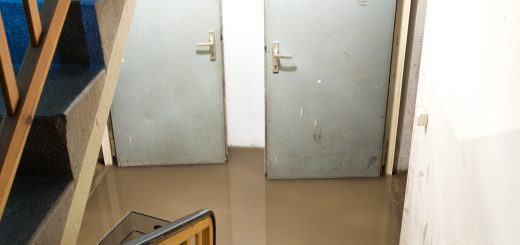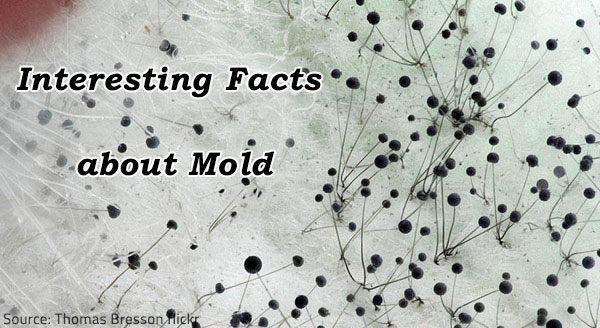Ways to Prevent Water Damage
The following are some simple ways that homeowners can follow to prevent water from damaging their homes.
Check All Household Appliances
The first way to prevent water damage is to check all household appliances. These include the washing machine, the dryer, the dishwasher, the refrigerator, air conditioning systems, and water heaters.
The hoses on any household appliance that features them should always be inspected. They should always be maintained and kept in tiptop shape. Any hose that shows signs of wear and tear should be repaired or replaced immediately. Hoses should also be firmly attached to the connectors on household appliances.
Make sure that the drainages and filters on all household appliances are clear and free from debris. They can easily cause water damage if they are not able to drain properly and completely. Once an appliance takes noticeably longer to drain, then it is a sign that the drain or filter is clogged and needs to be changed.
It is not normal for any household appliance to leak or cause moisture to form in its surrounding area. If it does any of these, it might be time to bring it in for repairRepair is the act of fixing or restoring damaged property, m... More or to shop around for a new replacement.
Buy Quality Household Appliances
Homeowners should invest in household appliances that have a known quality standing. This means they should have been made by a reputable company and they should also have passed safety tests and quality standards. It may be tempting to buy cheaper things from unknown brands, but the hidden costs of constantly repairing and preventing the risks of water damage will make it more expensive in the long run.
Check The Plumbing
Another way to prevent water damage is to check all plumbing inside the house. Checking all plumbing includes sinks, showers, bathtubs, and toilets.
Make it a habit to check under kitchen sinks and bathroom sinks. The drainage pipes should not be leaking. Don’t forget to check around the sink. If water is collecting in an area other than the basin itself, then it can be an indicator that something is loose in the main parts of the faucet.
Check the areas around showers and bathtubs for cracks, holes, and other openings where water might leak. Seal these closed right away. If the walls or floors around showers and bathtubs remain wet long after someone has used them, then it could be a sign that a supply line or a drain pipe is damaged.
As much as possible, do not hang or place deodorizers, decorations, sanitizersSanitizers are chemical agents used to reduce bacteria and m... More, and the likes near toilet bowls. These are often the cause of toilets clogging and causing water damage at home.
Inspect The Pipes
As pipes and plumbing are often behind walls, under floors, or through ceilings, always be on the lookout for suspicious water stains. If there is a water blot showing through a wall, a floorboard, or a ceiling panel, then it could mean that one of the pipes is busted and leaking.
To prevent faulty plumbing, schedule a regular checkup of all pipes in the house. If the house is a little old, then all the more should pipes be placed under thorough inspectionInspection is the careful examination and assessment of a pr... More. Replace anything cracked, leaking, and rusty.
Unusual Noises in the Pipes
One of the signs of a broken pipe is unusual noises in the pipes. Generally, there are three sounds that are associated with the pipes, particularly in older plumbing systems. These are known as the water hammer, whistling and chattering.
The water hammer is the thumping sound in the pipes when the valves are suddenly turned off. Often the water hammer can be taken out when an air chamber or an extra length of pipe is installed in the wall where the supply pipe meets the fixture such as the faucet. Another option is to place shock arrestors to the main pipe line that is located near the cause of the noise. A water hammer can mean that the piping is subjected to shock waves. This can leadLead is a heavy metal that can be toxic to humans, especiall... More to wear and tear and thus, to leakage if it is not properly addressed.
Another example of noise as an indicator of a problem in the system is a chattering noise. In this situation, the loose pipes bump into each other causing the sound. This can be due to the fact that the washers are worn out or the parts of the system are loose. It is important to address this situation because the constant tension of the pipes rubbing against each other can leadLead is a heavy metal that can be toxic to humans, especiall... More to holes that can spring leaks.
Finally, when the water squeezes through a pipe that is too small, a whistling sound is emitted. It usually occurs when there are bends in the pipe. When a sound such as this is heard, particularly when it did not exist before, there is a need to investigate the matter because it can mean that the pipe is dented. This is a serious matter because if the water pressure builds up too much, it can leadLead is a heavy metal that can be toxic to humans, especiall... More the pipe to burst causing water damage. To remedy the situation, the piping system can be straightened out or a pressure reducing valve installed.
Caulking around Tub and Shower
One job every home owner should learn to do is to caulk around the tub and shower. It’s a job that has to be done every couple of years and it’s a job that is a must to avoid water damage. Whether you are caulking a tub or shower the hardest part of the whole job is cleaning out the old caulk.
The type of caulk used is important. It should be “a water cleanup caulk.” Look for caulk that reads Water Clean-up for Bathrooms. There are 2 types and either will do the job: the squeeze tube caulk or the caulk that has to be used with a three dollar sealant application gun.
Sanitary & Sewer Maintenance
Know where your main line cleanout (sewer access) is located. If you don’t have a main line cleanout, then you should consider having one installed. It is a very wise investment in case of any back-up. Make sure that you have a wrench on hand to remove the cleanout cap. This will put the sewageSewage is wastewater containing biological and chemical cont... More back-up mess outside of your home as opposed to inside of your home. Test and confirm that the cap is removable. Use environmental Bio-One drain treatments. NEVER use acid or strong chemical treatments. This can cause more damage than good.
Follow up every drain cleaning service with a camera inspectionInspection is the careful examination and assessment of a pr... More of your sewer line. This will make sure that your pipe was really cleaned efficiently. Make sure that the camera inspectionInspection is the careful examination and assessment of a pr... More service is included with the drain cleaning, and no additional cost to you is incurred for this service.
Inspect the Roof
Because it is constantly exposed, the roof can deteriorate a lot quicker than the rest of the house. Conduct a periodic inspectionInspection is the careful examination and assessment of a pr... More of the roof to check if the roofing materials can still withstand the elements or not. Replace anything that has cracked and cover anything that has opened up.
Clear gutters and drains from dirt and debris that may have collected in them. Water should be able to drain from the roof without any obstructions. Consider cutting off tree branches that hang right over the roof. The leaves falling from trees can easily block gutters and drains and become a source of a water damage problem.
Weather Events
What are the weather events that can cause water damage to a home? A flash flood, pouring rain, and heavy winds are a few of those things. These weather-induced events can easily damage a house. One surge and an entire wall or even the entire structureStructure refers to the framework or components of a buildin... More can go down. However, it doesn’t have to take a strong wind, a sudden flood, or even a light rain to cause severe water damage. Water, whether in massive flows or in small measurements, can both cause extensive amounts of damage to a home.
The presence of a little bit of water is easy to disregard. It might not seem to amount to much at first, but that little bit can already pose a big threat to a home. All it takes is a tiny, but constant dripping to wreck ceilings, walls, stairs, and wooden floors. A little trickle of water is already a potential cause of a hazardous electrical fire if it reaches appliances, electronics, and sockets around the house. A small yet steady dribbling of water is a way to silently sabotage the entire structural foundation of a home, especially if it is left neglected over a long period of time. Once that little bit of water gets to an area where it shouldn’t be, homeowners already need to look out and prepare for water damage.
Install Water Alarms
If there are fire alarms, then there are water alarms. Consider investing in inexpensive water alarms that give off a warning sound when it senses moisture. These are very effective when placed in an area with high water damage risk such as under sinks or in the bathroom and hot water heater.Some water alarms can be connected directly to household appliances. Once it senses that the appliance is producing more water than it is supposed to, the water alarm immediately shuts off the appliance’s water supply. A similar alarm that shuts off the main water supply can also be used for the entire house.
Main Water Valve
Main water valve location and identification – One of the most important things to know about your house is where to shut off the water when there is a water problem. Every member of the household should know where the main valve is and how to shut it off in case of an emergency. Another important point is that the valve should turn easily so that even a very young person could turn the water off. It is also recommended that a tag be put on the main valve so that it is easily recognized as such. Many times people know where the valve is located but, when a water problem develops, they don’t remember which valve is the main valve. The tag will identify the valve and could save thousands of dollars by keeping water damage to a minimum.
Once you made this list a part of your regular household check, you’ll realize that you are already a step ahead in preventing water damages. Using simple skills and forming proactive habits are what homeowners can do to effectively stop water damage events.
If everything else fails then it is time to call a professional. Water damage restoration professionals play a crucial role in mitigating the devastating effects of water damage. Their expertise ensures that homes and businesses can be safely and thoroughly restored, allowing occupants to return to a clean and healthy environment.
Source: RestorationMaster












